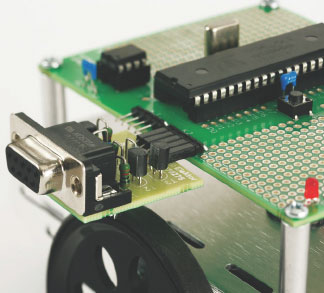Parallax Propeller Serial Port
Posted : adminOn 3/26/2018Using the Parallax Serial Terminal. The Parallax Serial Terminal provides a convenient way to exchange data between the Propeller and your PC. It’s most often used. Parallax Propeller investigation. The propeller chip boots up first checking for a connected PC on the serial port.
In this tutorial, I'll show you how to use the Parallax Serial Terminal for debugging with the Propeller. This builds on my other tutorials which you can find. The Parallax Serial Terminal is a simple, underrated piece of software which is installed automatically with the download and install of the Propeller Tool from Parallax. You’ll find the shortcut for it in the same “Start/Menu” group as the Propeller Tool.

On the surface, the Parallax Serial Terminal, or PST doesn’t seem like an important tool; that is until you start writing spin code which works with internal variables, retrieving data from a sensor, or simply start wanting to pull out hair due to a chunk of code that isn’t doing what you expected for unknown reasons. PST allows us to pull back the curtain and view what is happening behind the scenes. Because it requires only the existing programming connection to the Propeller, PST also provides us a valuable way to interact with our Propeller when on the road when other output devices like TV or VGA screen connection simply aren’t possible. I’m about to introduce you to your new best friend.
To use PST, you’ll need to be armed with a little information about where the computer sees your Propeller connected. When the Propeller is plugged into your computer, the special USB chip on the programming plug, or on the board itself (depending on your configuration) sets up a Serial Communication Port, (COM port) and assigns it a number. We can obtain that number by simply starting up the Propeller Tool, turning on your Propeller board and pressing F7. Simply make a note of the detected COM port for reference.
(Twenty years ago, serial communication was the standard that almost all computers and devices. It was used with very specific port numbers with strict rules. Thankfully computing has evolved to the point where we can take advantage of this time tested standard easily.) Launch PST. Download Ifriends Hacked Username And Password. Using the left-most drop down select your “Com Port:” matching the one detected with the Propeller Tool.
There are a number of other controls here which provide a degree of visual complication. Don’t be alarmed by them. The controls we will be using 99% of the time are the Com Port: setting which you are now familiar with, the Baud Rate setting, and the Disable/Enable button. If you really want some heavier, geek reading on the other checkboxes, and indicators, there is an excellent article on how serial communication works on. By now you should have PST running with the proper “Com Port” set. It’s time to jump into the Programming Tool again and do some programming.
Parts For this lesson, you'll need the following parts • A Parallax Propeller ( works great, but you can also use a protoboard or demoboard) • A Ping))) Sensor (Source: Parallax) • A 1k ohm resistor • A 3 wire servo cable (or plug the Ping into a breadboard and use jumpers to connect to the Prop) • LED & resistor from the The Code Download: Let’s make things interesting. Take a few minutes to reconnect the LED and resistor combination from Lesson 1. We will expand on the code from that lesson a bit. Type in the following code and send it to your Propeller with F10; We’ve added a few lines of code to increase the speed of the Propeller to 80mhz. The LED seems to flash at same steady rate, but in reality the Propeller is operating at a much faster speed.